 Photographs courtesy of Martin Casey
Photographs courtesy of Martin CaseyMartin Casey’s Caledonia yawl, AUDREY/JAMES, carries the names of his parents, assuring they will be remembered by future generations of the Casey family.
James Casey was a remarkable man. He was born in Newport, Rhode Island, in 1924, grew up in the Great Depression, attended Rhode Island School of Design, and, with the arrival of World War II, enlisted in the U.S. Army and served in Italy. In January 1942, then Private Casey saw action in the Battle of Rapido River in an ill-fated effort to secure Rome. American losses were 2,100 troops either wounded, killed, or captured. In January 1944, in another attempt by American forces to reach Rome, Casey took part in the Battle of Monte Cassino, a victory for Allied forces that came at the cost of 55,000 casualties; Casey was among them, having been hit in his right foot by German rifle and machine-gun fire. Four months later, in the Battle of Anzio, he took a German machine-gun round in his left leg. By the end of the war in Europe, Casey had been raised to the rank of Sergeant, and for his service in Company F, 143rd Infantry Regiment, 36th Infantry Division, he was awarded six Purple Hearts and a Bronze Star for bravery. Following the war, he spent two peaceful years as a Trappist monk.
James Casey married Audrey Barton in the 1950s, and the couple raised a family of 10 children. He worked as a calligrapher and stone carver at the John Stevens Shop, a company in Newport that has been doing inscriptions in stone since 1705. Some of Casey’s carving is on the John F. Kennedy Memorial at Arlington Cemetery, at Rockefeller Center in New York and the Prudential Center in Boston.
In addition to being a master craftsman and artisan, he had a lifelong interest in boats. One of Casey’s four sons, Martin, took to boats too. He had been, by his own account, “a rebellious, tormenting teenager who challenged his father frequently,” an uncomfortable match for a father who was a strict disciplinarian. Even as he grew into adulthood, Martin found it difficult to connect with his father, but when he became a father himself he was able to leave the discomforts of the past behind and develop a greater appreciation for his father and compassion for the unseen scars he bore from his experience during the war.
Martin had taken to building wooden surfboards while his father was in his 80s and thought building another board would be a way to connect with him through their common interest in boats and woodworking. James replied to the offer with “No, I don’t know anything about it,” an answer Martin was prepared for. He made other overtures for experiences they could share, without success, until he suggested visiting Newport’s International Yacht Restoration School, where the 131’ schooner-yacht CORONET, built in 1885, was being restored. The day went well, and provided an opening between father and son. A few weeks later, the elder Casey accepted Martin’s offer to join in building a new surfboard. While his spirit was willing, his health was failing and he was hospitalized. He passed away in June 2017 at the age of 92.
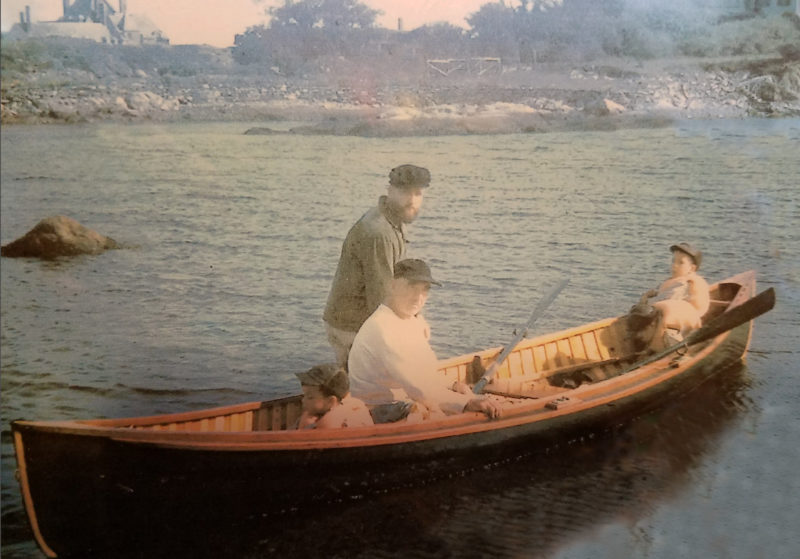
This 16′ Old Town double-ended row boat was James Casey’s second love. He bought it in 1958 when his wife, Audrey, was delivering baby No. 5. The family affectionately called it “the green boat,” but its true name was KOWLOON GIRL in honor of Audrey, who was born in Kowloon. Note the oarlocks set on a small side deck, which is actually the top of a long sponson, an addition Old Town provided to add stability and safety. Standing by is Martin’s father, and aboard are his grandfather and two of his brothers. Martin is the boy in the stern looking down into the boat.
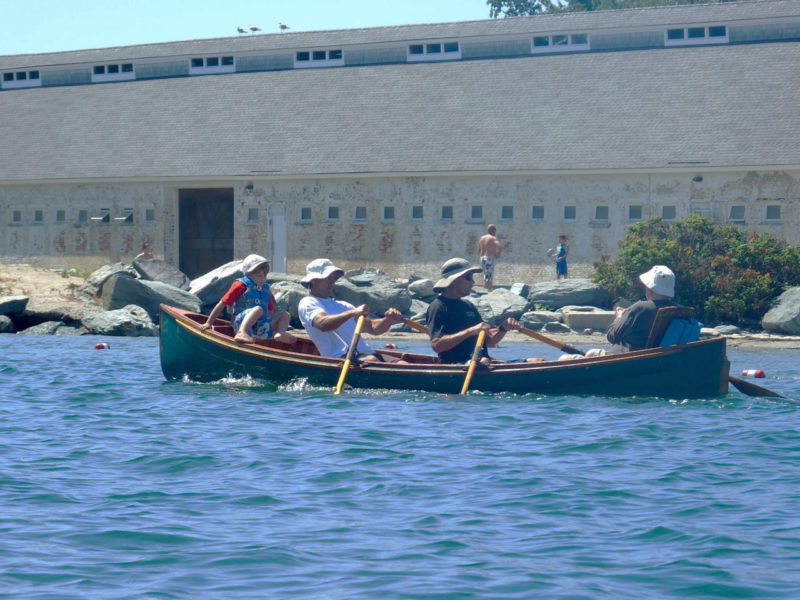
The Old Town double-ender KOWLOON GIRL carries four generations of Caseys. James steers with a paddle from the stern, Martin rows stroke, his son rows bow, and his grandson is perched in the bow.
Martin had been considering building a wooden boat for camp-cruising in his retirement and settled on Iain Oughtred’s Caledonia Yawl, a boat that appealed to him as both beautiful and practical, and a design of which his father, who loved small double-ended oar-and-sail boats, would have appreciated. James had purchased an Old Town double-ended rowing boat in 1958 and in the ’80s had built a cold-molded Wee Lassie canoe with Martin’s younger brother.
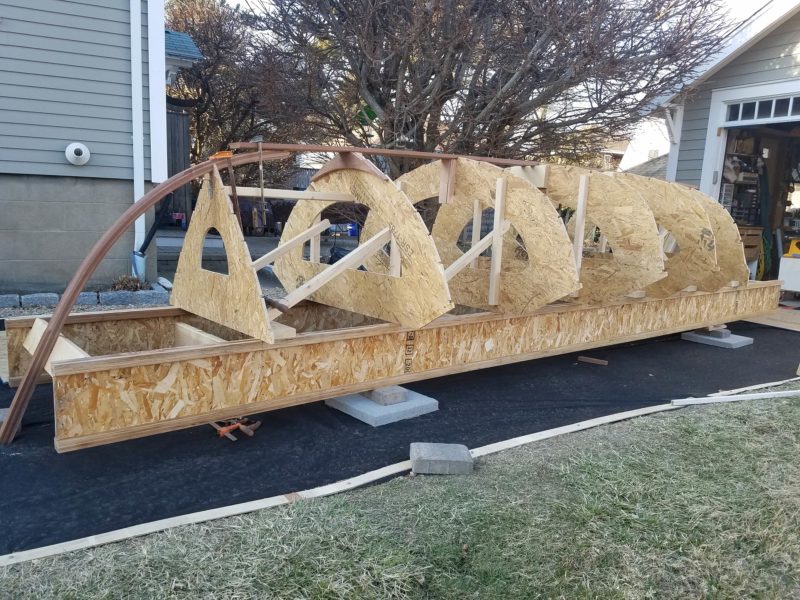
The weather was looking reasonable in mid-March 2019 when Martin set up the building jig for the Caledonia Yawl. Snow was still a possibility, but the winter had been mild, a trend he hoped would continue. Two 20’ composite construction joists from a local lumber yard formed a building frame that would remain true for the duration of the build.
In March 2018, eight months after Martin’s father died, Audrey became ill and was hospitalized for what was expected to be a short stay. During that time, Martin ordered the Caledonia plans and got his workshop ready for the build. He started with the small parts: thwarts, laminated stems, spars, centerboard and trunk. Audrey was pleased to know her son was happily occupied with a complex and engaging project, but sadly, she didn’t live to see the boat finished. Before the month’s end, she passed away, as had her husband, at the age of 92.
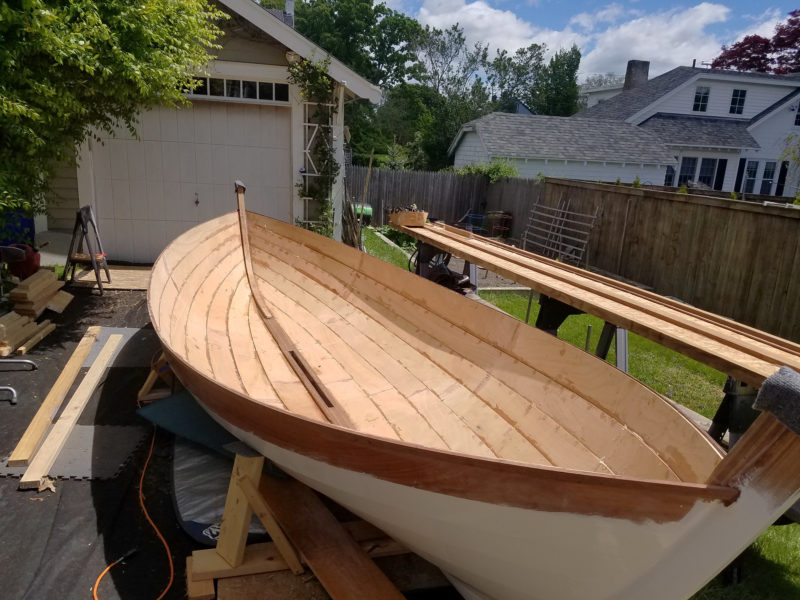
Martin chose to build Iain Oughtred’s second version of the Caledonia yawl, which had seven strakes instead of the original design’s four. While there are more planks to shape, they more easily take the curves and twists demanded of them.
Martin continued with the Caledonia Yawl, and as the work progressed, he gathered resources on boatbuilding to help him through his first experience with lapstrake construction. He discovered that Oughtred had written Clinker Plywood Boatbuilding Manual and was poised to buy a copy.
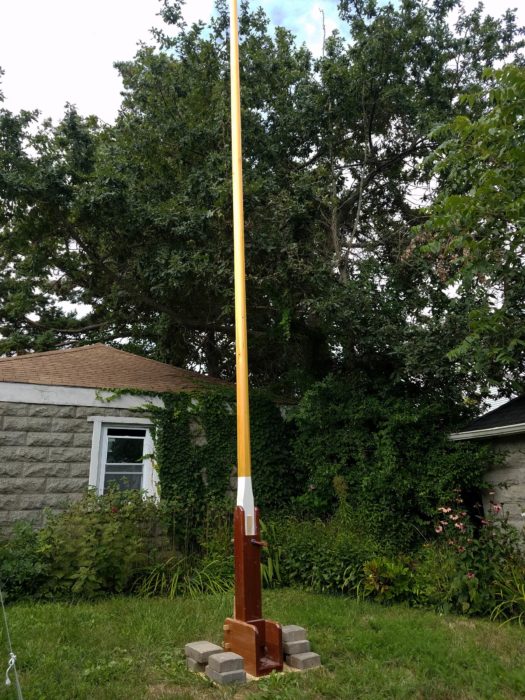
It’s not a flagpole, but the Caledonia’s main mast, equipped with a tabernacle. Stepping the 18’ mast in an unsteady boat seemed a little daunting to Martin, and in May 2018, while he was recovering from back surgery, he decided to mount the mast on a tabernacle.
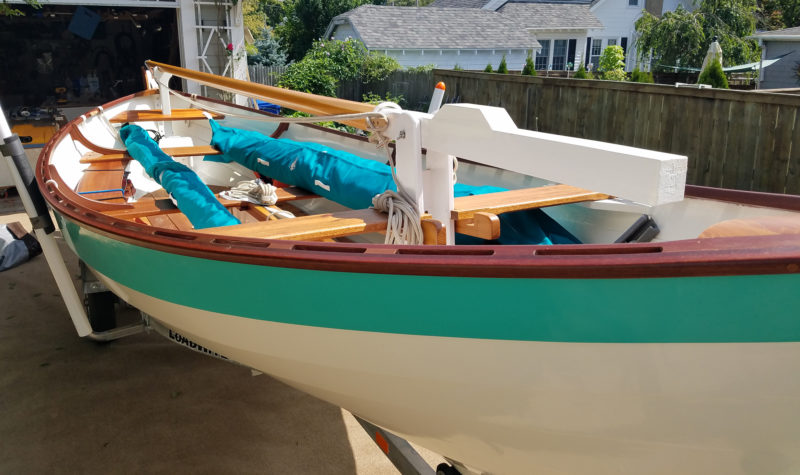
The finished tabernacle, installed in the boat, has worked well and saves Martin from straining his back.
While settling their parents’ estate, Martin and his brothers cleared out their father’s shop, sorting through tools and materials accumulated over six decades for working on his boat, carving wood and stone, doing calligraphy, making paper, and casting concrete. Among the books James had collected, Martin found a copy of Clinker Plywood Boatbuilding Manual. It was confirmation that his father would have approved of the Caledonia Yawl.
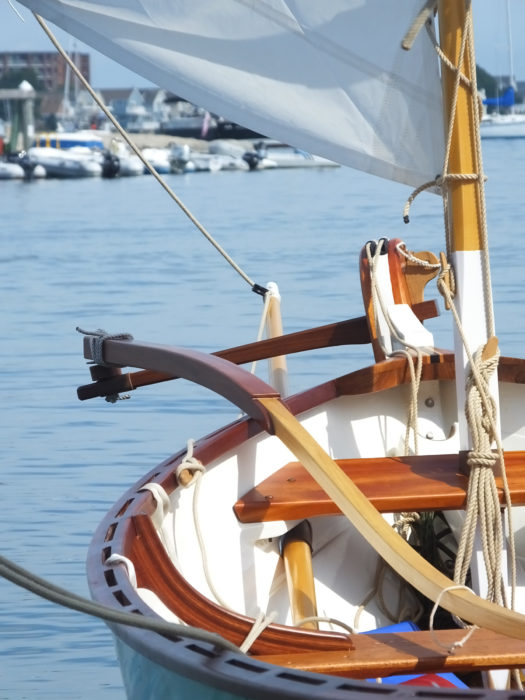
The black walnut gracing the tiller came from Martin’s father’s workshop.
Martin added his father’s tools—planes, chisels, clamps, files, rasps, and handsaws—to his own in his small shop. He also inherited several sharpening stones and leather strops; his father always kept a keen edge on all of his edge tools. Whenever Martin used those tools he thought of his father and often felt he was fulfilling his father’s dream. Bits of wood from James’s shop were incorporated into the yawl: cherry for the mizzen thwart, black walnut for the tiller, and a salvaged maststep from the Old Town for the Caledonia’s mizzen maststep.
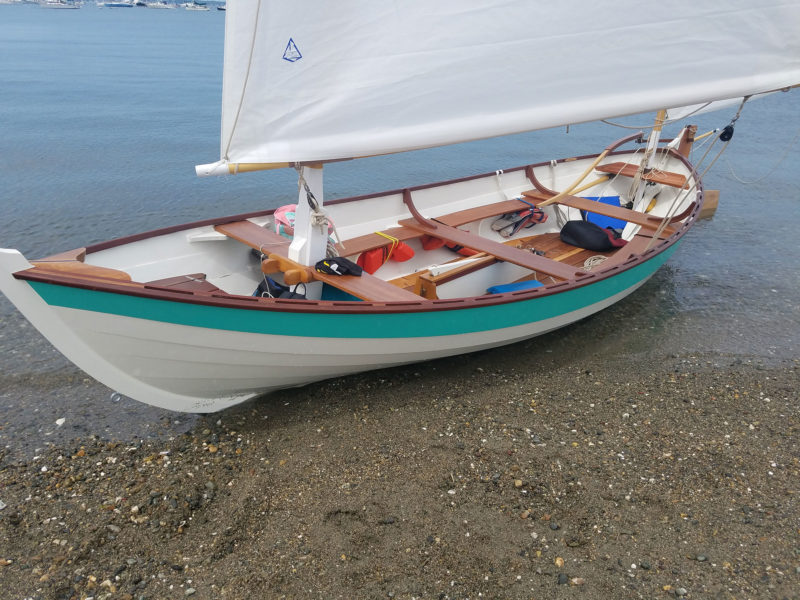
If AUDREY/JAMES follows the example set by KOWLOON GIRL, she’ll be around for a long time and be enjoyed by Martin’s large extended family for at least half a century.
On August 1, 2019, with most of his siblings and his two grandsons present, Martin launched his Caledonia Yawl and christened it AUDREY/JAMES in honor of his parents. She sails the waters of Newport as a link between generations.![]()
Do you have a boat with an interesting story? Please email us. We’d like to hear about it and share it with other Small Boats Magazine readers.

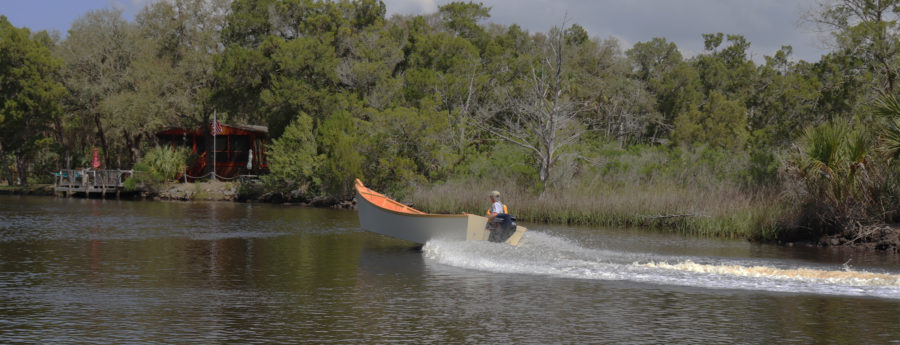
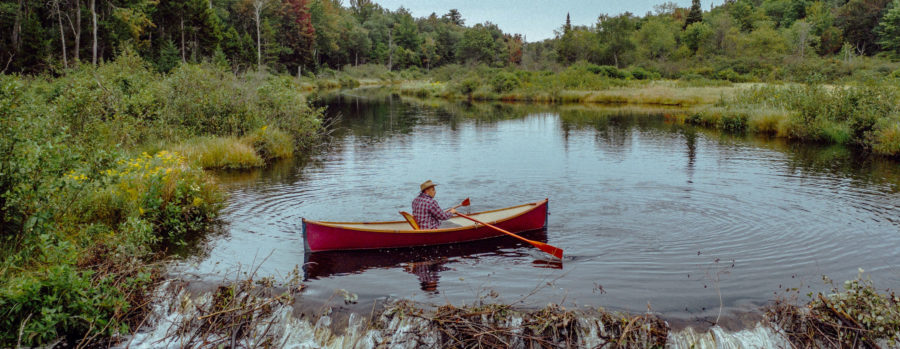
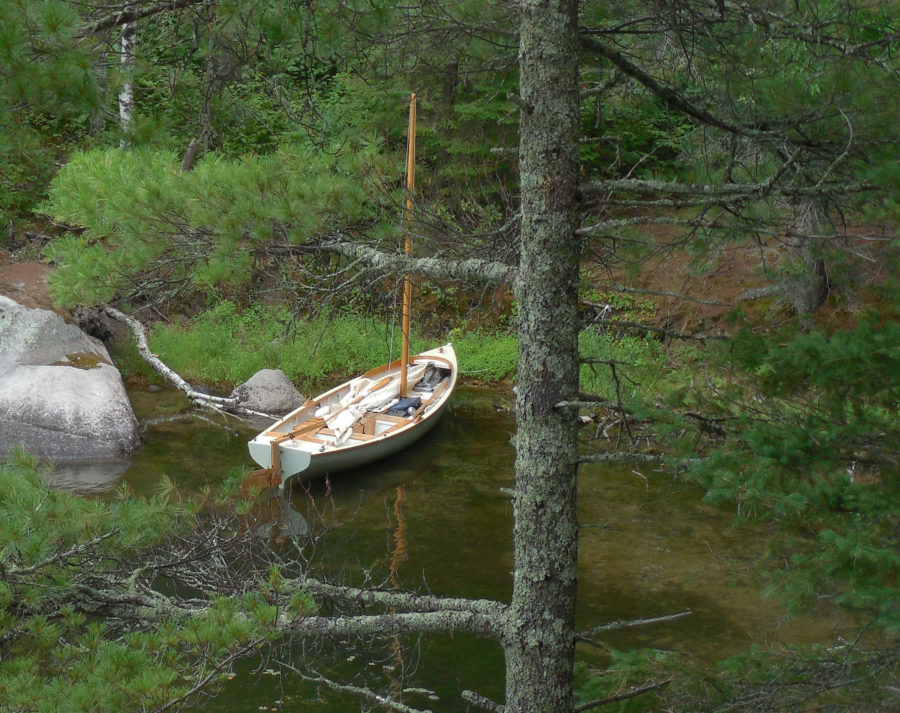
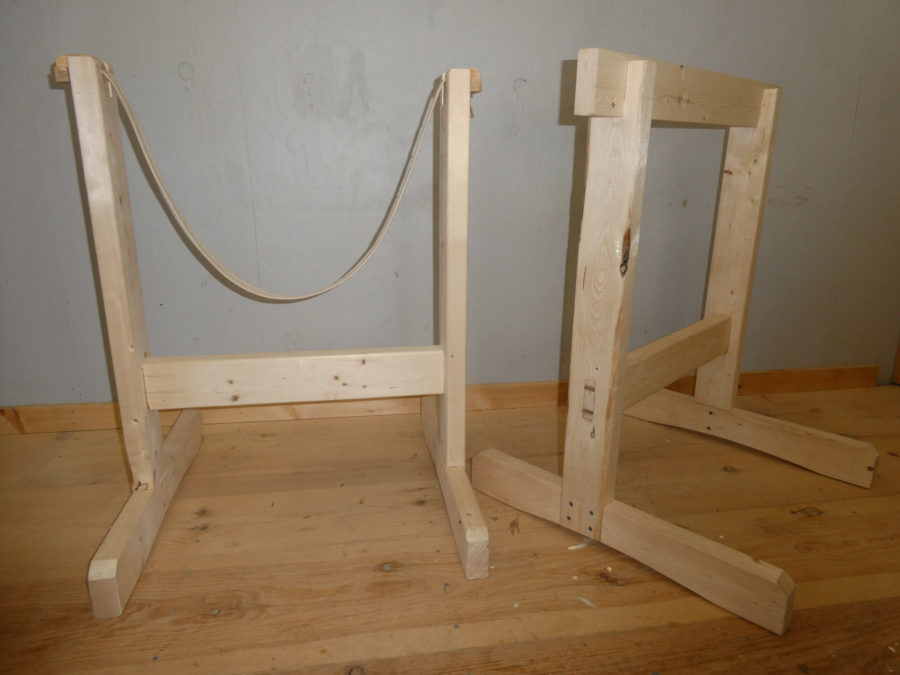
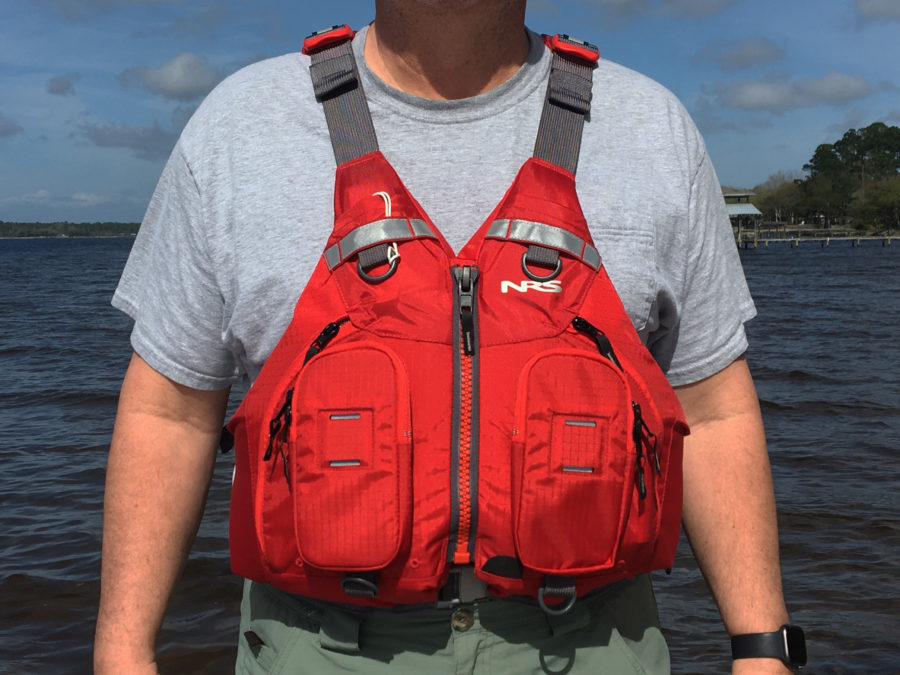
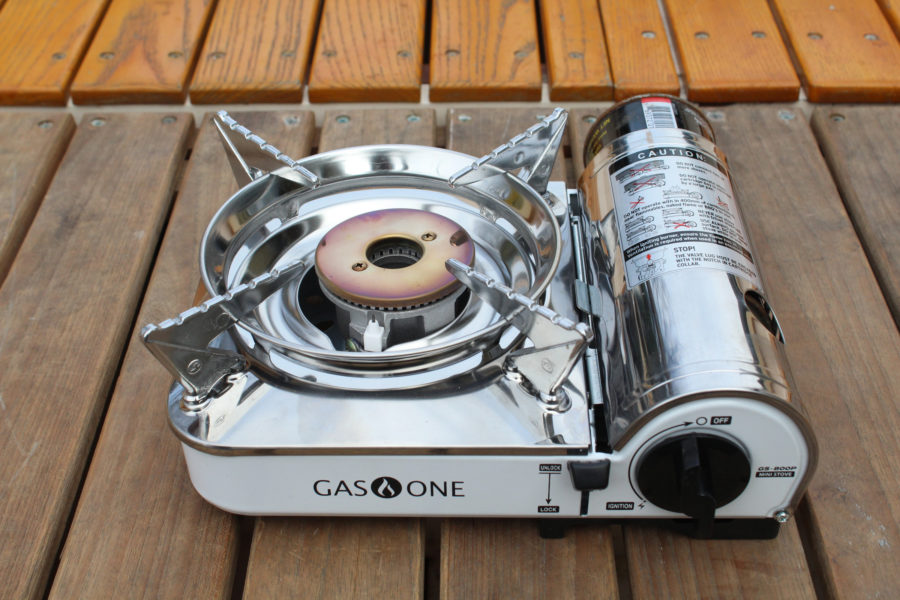
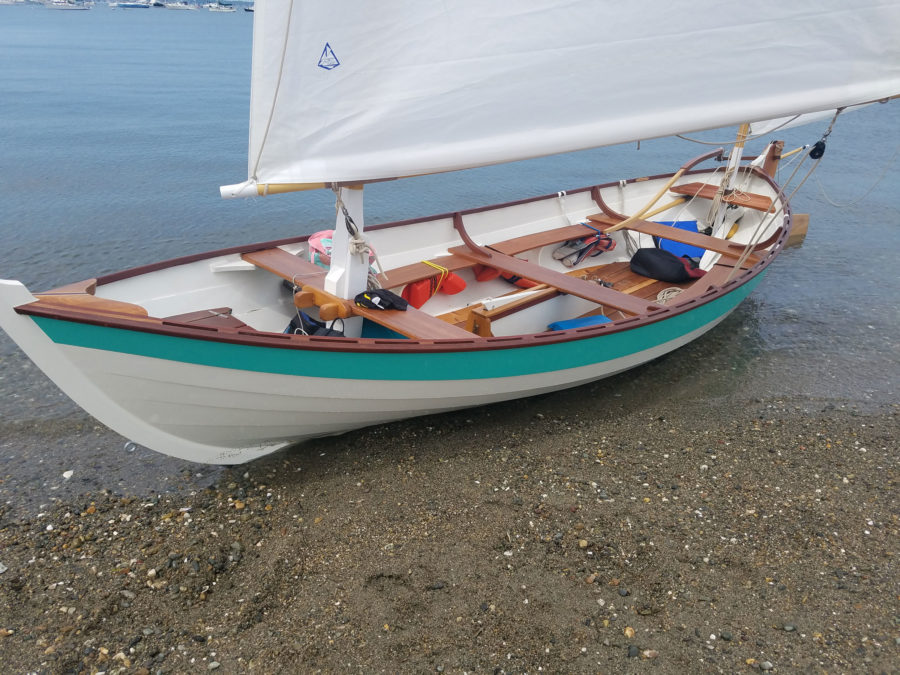

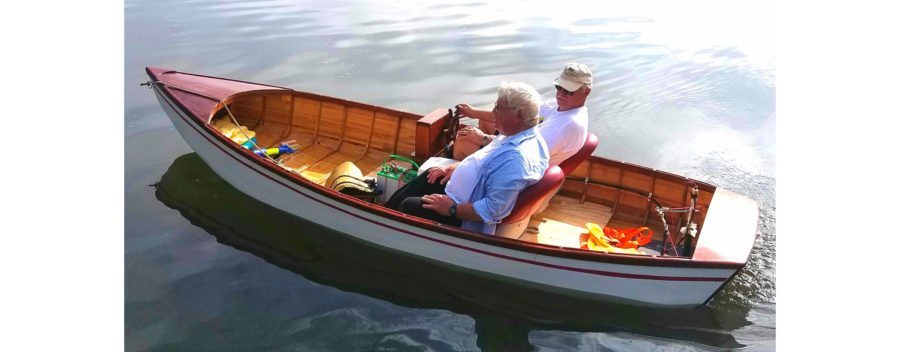
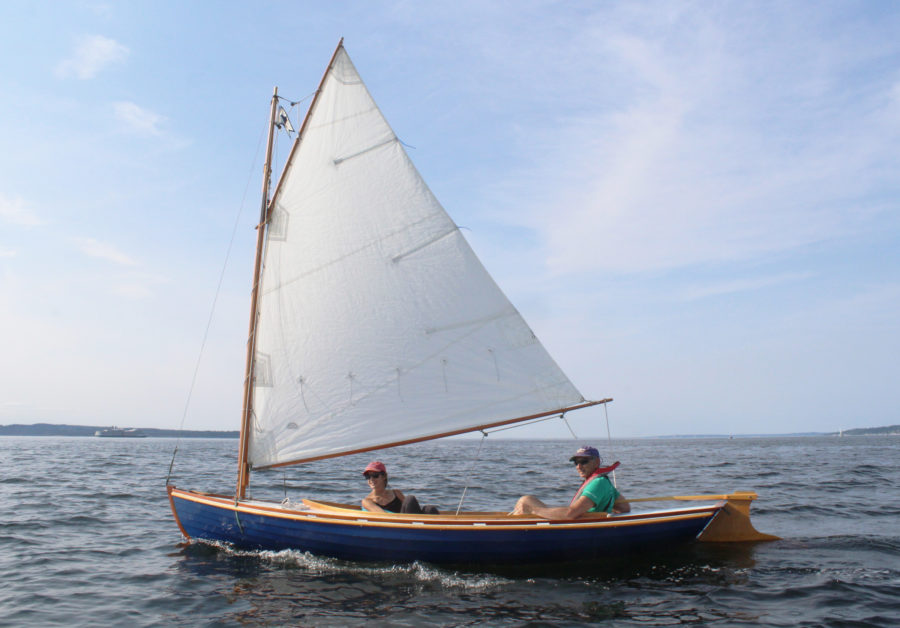
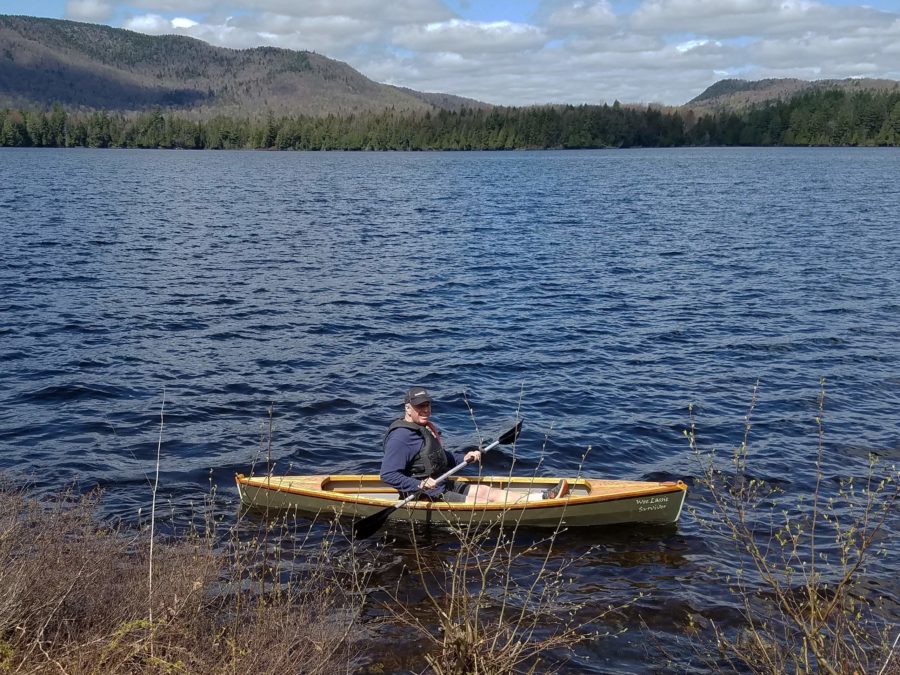
Great story. Beautiful boat. Your parents would be proud of you!
I walk my dog by Martin’s house every day and have enjoyed seeing his beautiful boat take shape.
Beautifully done. I especially appreciate your balance of paint and bright work, color choices, etc. Very eye catching.
Exquisite craftsmanship and a pleasing balance of materials and finish. We love the part about the tools and resources carrying a family’s passion forward. And now we are wondering about the status of the Old Town, an interesting boat as well.
Thank you for the story.
This is a wonderful story and history of a family I too am connected closely with. I was so pleased to read it. Well done Marty, an amazing achievement.
My brother Marty is a great craftsman and has been for a long time. I remember when I was a kid he would take me striper fishing in a boat he built when he was around 20 years old. Nice article and a beautiful boat.
Phil Casey
I loved this story Marty, and found it moving as I read about the connections it made with Dad. It is an amazing piece of work and he would be beaming! I am so proud to be able to say I’m your sister…and not just because of the boat.
I have met the builder and seen his gorgeous boat, but I had no idea about the equally beautiful family story behind it. It brought tears to my eyes.
Thanks for a really great, very moving story, Marty. As one of your older brothers, I witnessed many of the struggles between you and Dad. I think your story provided a rare insight into that period from your perspective and gave us a glimpse of your history. I know in our younger years it was difficult to know what Dad’s struggles were because we were just kids. Thank you. I am also very proud to be one of the few that have actually had the helm of AUDREY/JAMES! A memorable day! Thank you!
Beautifull boat, good work 🙂 I sail the traditional one in Danish waters – great boat 🙂
It’s a gorgeous boat and so beautifully made, right down to the smallest details. It literally turns heads when out on the water! Dad would have been incredibly proud, and I love that his tools, wood, and book are such a part of it. Happy too that it represents rebuilding your relationship with him.
During the planning stages of the build I was aware of the family or “Dad” influences that were drawing me into it…the simplicity of a traditional design, the spaciousness for the grandkids and my sons, camp cruising etc. But as I became more involved in the project it developed a deeper meaning to me beyond a being a nice craft. It was morphing into a testament to Dad, what he taught me, meant to me, how we got through our struggles and we also had many similarities. I frequently, mentally referred to what he would do with various stages of the boat…paint, oil or varnish, glossy or satin, stainless or bronze ( bronze of course!). And there were also times I would say ” Dad would do it like this. Therefore I’m not”!
The Old Town is on to another owner. Those photos show the first and last day the Old Town was in the water with the family – 60+ years apart. The AUDREY/JAMES may be the next “Old Town.” Check back in 60 years.
Thank you for the beautiful comments.
I was wondering who’s cute boat that was in the harbor……….now I know! Great story. Nice to catch some waves with you yesterday. See you soon sailing or surfing!
Absolutely stunning. Yes, your parents are smiling down on you and oh so proud. Great story.
I enjoyed the story and the photos of a fine boat. Yes, boats can and do connect us. Thanks.
Wonderful story, wonderful you related your father’s service in World War II. He was most certainly a hero as well as an artist and craftsman and creator of a fine family. What more can a man achieve?